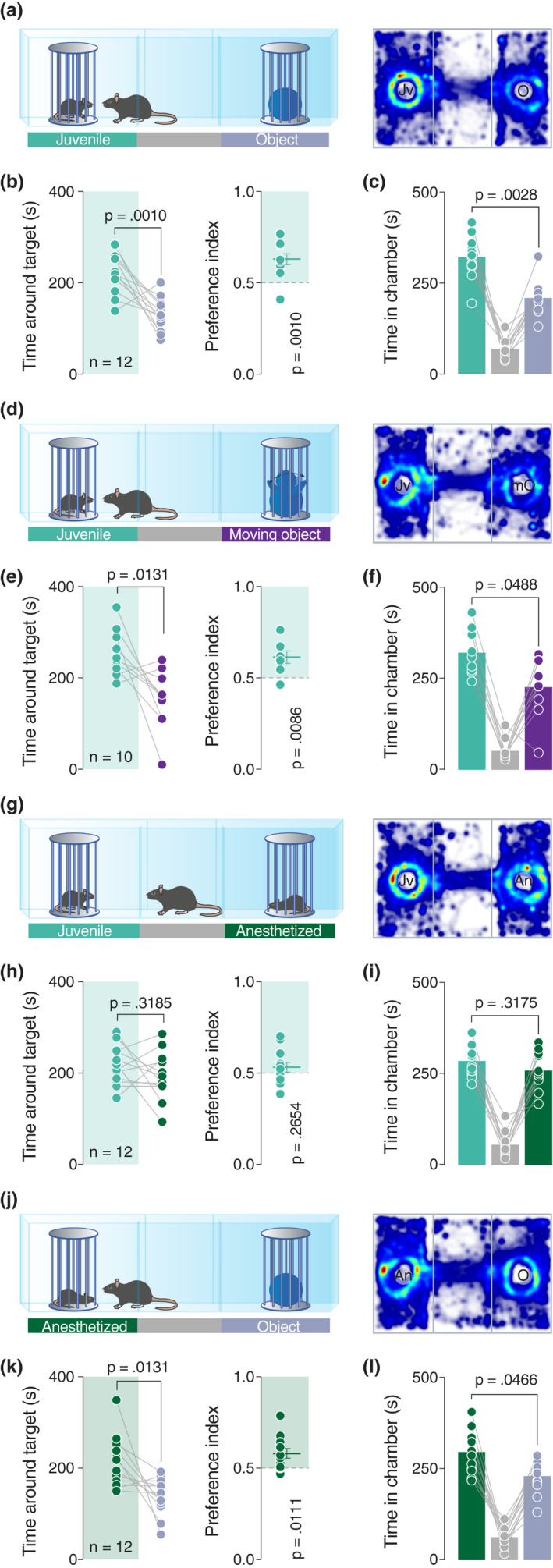FIGURE 1.

The movements are not essentials to drive sociability in mice. (a, d, g and j) Left: schematic representation of the three‐chamber test. Right: heatmap reporting the mean occupancy of the batch of mice during the test. (b, e, h and k) Left: time around the enclosures containing the stimuli (paired t‐test. b: t 11 = 4.444, p = .0010. e: t 9 = 3.081, p = .0131. h: t 11 = 1.112, p = .3185. k: t 11 = 2.956, p = .0131). Right: calculated preference index (one‐sample t‐test against theoretical mean = 0.5. b: t 11 = 4.41, p = .0010. e: t 9 = 3.346, p = .0086. h: t 11 = 1.173, p = .2654. k: t 11 = 3.048, p = .0111). (c, f, i, and l) Time spent in each chamber (paired t‐test. c: t 11 = 3.823, p = .0028. f: p = .0488, W = −39 (Wilcoxon matched‐pairs signed rank test). i: t 11 = 1.047, p = .3175. l: t 11 = 2.241, p = .0466). Jv, juvenile conspecific; O, object; mO, moving object; An, anesthetized juvenile; n, number of mice that performed the experiment
